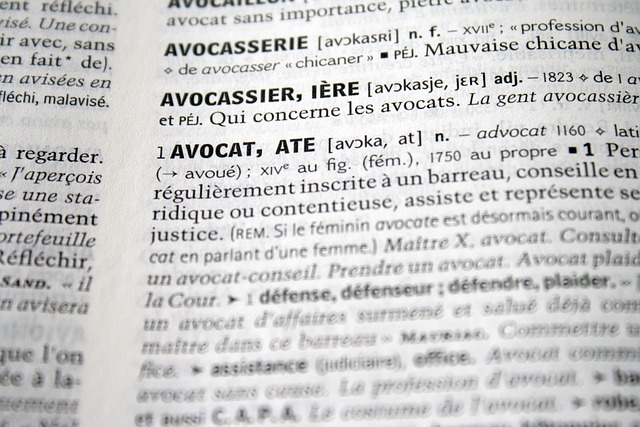Pedestrians have legally protected rights during DUI traffic stops, including the right to remain calm, refuse incriminating questions, and request safe interaction areas away from traffic. They are shielded from unreasonable search and seizure, with officers needing probable cause for any detention or frisking. To ensure street safety for all, strategic initiatives like enhanced traffic enforcement, improved street design, public awareness campaigns, and community engagement are crucial. Global cities leading the way in pedestrian-centric urban planning demonstrate how prioritizing these rights can transform urban environments, reducing fatalities and injuries while encouraging active transportation.
In urban areas, pedestrians’ safety is paramount yet often overlooked. This comprehensive guide explores pedestrians’ rights and safe streets, focusing on interactions with drunk drivers. We delve into the impact of DUI traffic stops on innocent bystanders, highlighting the crucial need for legal protections. From understanding your rights during DUI encounters to advocating for community safety, this article offers practical strategies. Join us as we explore successful policies that foster pedestrian-friendly environments, ensuring everyone’s well-being on our shared streets.
- Understanding Pedestrians' Rights: A Comprehensive Overview
- The Impact of DUI Traffic Stops on Pedestrians
- Legal Protections for Pedestrians During DUI Encounters
- Strategies to Ensure Safe Streets for All Users
- Community Engagement and Advocacy for Pedestrian Safety
- Case Studies: Successful Implementations of Pedestrian-Friendly Policies
Understanding Pedestrians' Rights: A Comprehensive Overview

Pedestrians have rights that are protected by law, especially in situations involving traffic and law enforcement. Understanding these rights is crucial for ensuring safe streets and fair treatment for all road users. When a pedestrian interacts with police during a DUI (Driving Under the Influence) stop, it’s important to know what they are entitled to. They have the right to remain calm and ask questions regarding their detention, including why they are being stopped and whether they are free to go.
During such stops, pedestrians can request that officers respect their personal space and privacy. This includes not invading their personal area without consent or justification. Additionally, pedestrians have the right to refuse to answer any questions that might tend to incriminate them. These rights during DUI traffic stops aim to protect individuals from aggressive or inappropriate police conduct and ensure their safety while maintaining their legal entitlements.
The Impact of DUI Traffic Stops on Pedestrians

Pedestrians often find themselves at a significant disadvantage during DUI traffic stops, which can have profound effects on their safety and well-being. When law enforcement officers pull over a vehicle suspected of being driven under the influence, pedestrians nearby may experience heightened anxiety and vulnerability. This is particularly true in areas with heavy foot traffic, where individuals walking along the streets or crossing at intersections are more exposed to potential dangers.
During these stops, it’s crucial to consider the rights of pedestrians as well. While the focus is primarily on ensuring the safety of drivers and officers, pedestrians also have a right to be protected from harm. This includes being free from unnecessary intimidation or harassment during the stop, as well as having their safety considered when traffic control measures are implemented around the scene. Protecting pedestrians’ rights during DUI traffic stops is essential for fostering a safe and inclusive environment for everyone using public spaces.
Legal Protections for Pedestrians During DUI Encounters

During a DUI (Driving Under the Influence) traffic stop, pedestrians have specific rights and protections under the law to ensure their safety. While the focus is often on the driver’s rights, it’s equally important for pedestrians to be aware of what they can expect during such encounters. One crucial right is the protection from unreasonable search and seizure. This means that police cannot arbitrarily detain or frisk a pedestrian without probable cause, especially if the individual poses no immediate threat. Pedestrians have the right to remain calm and refuse to answer questions that could incriminate them, except for basic identification purposes.
Moreover, law enforcement must consider the safety of pedestrians when conducting DUI stops. They should ensure that their actions do not put bystanders at risk. This includes making sure that the pedestrian is not located in an area where they might be exposed to danger, such as near fast-moving traffic or in a dark, secluded spot. Pedestrians have the right to request a safe location for interaction with the police during a DUI stop. Understanding these rights can empower pedestrians to protect themselves and hold law enforcement accountable for any potential violations during interactions at traffic stops.
Strategies to Ensure Safe Streets for All Users

To ensure safe streets for all users, including pedestrians and drivers alike, several strategic initiatives can be implemented. One key approach is enhancing traffic enforcement to deter speeding and other dangerous driving behaviors. This includes increased police presence, speed cameras, and stricter penalties for violations. Additionally, improving street design through the creation of dedicated pedestrian walkways, well-lit areas, and clear crosswalks makes streets more inviting and safer for pedestrians.
Another critical aspect is raising public awareness about sharing the road responsibly. Educational campaigns that promote both driver and pedestrian rights during DUI traffic stops can significantly impact behavior. Encouraging drivers to be mindful of their surroundings and yielding to pedestrians at crossings fosters a culture of mutual respect. Similarly, educating pedestrians on street safety rules, such as staying alert, using crosswalks, and following traffic signals, empowers them to contribute to a safer street environment.
Community Engagement and Advocacy for Pedestrian Safety

Community engagement plays a vital role in advocating for pedestrian safety, especially in areas where rights during DUI traffic stops may be overlooked. By organizing and participating in local initiatives, residents can bring attention to the needs of pedestrians, particularly those who are vulnerable like children, the elderly, and individuals with disabilities. These efforts often involve raising awareness through educational campaigns that highlight best practices for safe street design and responsible driving behaviors.
Active participation in community meetings, town halls, and advocacy groups allows concerned citizens to voice their experiences and propose solutions directly to local authorities. This direct engagement ensures that pedestrian safety becomes an integral part of urban planning and policy-making processes. Together, communities can push for stricter enforcement of traffic laws, improved infrastructure, and innovative strategies to create a more inclusive and secure environment for everyone who walks the streets.
Case Studies: Successful Implementations of Pedestrian-Friendly Policies

In recent years, many cities around the globe have successfully implemented pedestrian-friendly policies, resulting in safer streets and enhanced quality of life for residents. One notable example is Amsterdam’s comprehensive approach to urban planning, which prioritizes pedestrians and cyclists over motor vehicles. The city has widened sidewalks, created dedicated bike lanes, and introduced traffic calming measures like speed bumps and reduced speed limits in residential areas. These strategies have not only improved safety but also encouraged active transportation, leading to healthier lifestyles for its citizens.
Another inspiring case study is New York City’s Vision Zero initiative, which aims to eliminate all traffic fatalities. This program focuses on designing streets that naturally discourage dangerous driving behaviors. By reducing speed limits, implementing pedestrian-activated crosswalks, and improving street lighting, New York has seen significant reductions in pedestrian injuries and deaths. These successful implementations demonstrate that prioritizing pedestrians’ rights can lead to profound changes, ensuring safer streets during DUI traffic stops and beyond.
In ensuring safe streets, understanding and advocating for pedestrians’ rights during DUI traffic stops is paramount. By implementing legal protections and community engagement strategies, we can foster environments that prioritize the well-being of all users. The case studies presented highlight successful pedestrian-friendly policies, offering valuable insights for creating vibrant and secure communities where everyone can move freely without undue risk. Together, through knowledge and collective action, we can revolutionize street safety.






